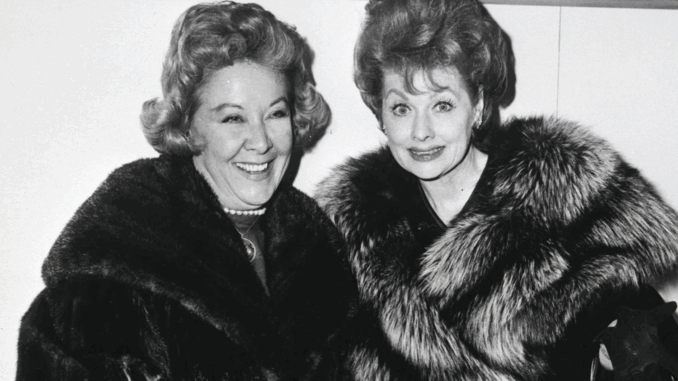
In the vast and ever-expanding universe of television, there are shows that entertain, shows that inspire, and then there are shows that fundamentally change the medium itself. For over 70 years, I Love Lucy has been viewed as the latter. While its comedic brilliance is undeniable, its true legacy lies not just in the laughter it created but in the innovations it pioneered. The show is more than a classic; it is the reason sitcoms, and a large part of the television industry, look, feel, and operate the way they do today.
At a time when television was a fleeting, low-budget medium, the creators of I Love Lucy made a series of revolutionary decisions that transformed the entire industry. They took the principles of filmmaking and applied them to television, creating a blueprint that would be followed for generations. From the way shows are filmed to how they are financed, the ghost of Lucy and Ricky is present in every multi-camera sitcom you see today.
The Three-Camera Revolution
Before I Love Lucy, most television shows were broadcast live from a studio and were filmed with a single camera. This method was primitive and restrictive. It limited camera movement, made it impossible to film from multiple angles at once, and resulted in a stiff, stage play-like feel.
The show’s star and co-creator, Desi Arnaz, was a visionary. He understood that to make the show feel dynamic and cinematic, it needed a different approach. Working with their cinematographer, Karl Freund, Arnaz and his team developed the now-standard three-camera setup. This system allowed three cameras to film the same scene from different angles at the same time: a wide shot, a medium shot, and a close-up. This gave the editor a wealth of footage to work with, allowing for a more fluid and engaging final product. This method is still the gold standard for multi-camera sitcoms and is a direct legacy of I Love Lucy.
From Live to Legendary: The Power of Film
The show’s move to a three-camera system was tied to another critical innovation: the decision to film on 35mm film instead of using the industry-standard kinescope. A kinescope was a cheap, low-quality recording of a television broadcast that produced a grainy, blurry image. Networks and sponsors were happy with this method because television was seen as a disposable medium, a temporary form of entertainment.
Desi Arnaz had a different vision. He believed that the show was a valuable, long-term asset. He and Lucille Ball made a historic deal with CBS: they would pay for the expensive film themselves in exchange for full ownership of the show and all its future reruns. This decision was a gamble, but it was a stroke of business genius. By using high-quality film, they ensured that the show would remain visually pristine for decades. This is why when you watch I Love Lucy today, it looks just as clear as it did when it first aired, while many of its contemporaries now look like low-quality home movies.
The Birth of a Billion-Dollar Industry: The Syndication Model
The most monumental and often-overlooked legacy of I Love Lucy is its role in creating the television syndication model. Because Desi Arnaz and Lucille Ball owned the rights to their show, they were able to sell the reruns to networks all over the world. This created a new business model, where shows could earn money for years after their initial broadcast.
This was a complete game-changer. It transformed television from a broadcast-only medium into a repeatable, profitable business. The money earned from syndication built a multi-million dollar empire, Desilu Productions, which went on to produce other classics like Star Trek and Mission: Impossible. Every sitcom creator, every network executive, and every fan who has ever enjoyed a rerun owes a debt of gratitude to the foresight of Desi Arnaz and Lucille Ball.
The Blueprint for Comedy: Story and Performance
Beyond the technical and financial innovations, I Love Lucy also created the creative blueprint for the modern sitcom. The show’s narrative structure—a simple, A-plot (Lucy’s latest scheme) with a comedic B-plot (the consequences)—became the standard formula for sitcoms for decades.
The show also perfected the art of the comedic ensemble. The chemistry between Lucille Ball, Desi Arnaz, Vivian Vance (Ethel), and William Frawley (Fred) was lightning in a bottle. They were a perfect unit, with each actor playing a specific role in the comedic dynamic. This template of the zany protagonist, the exasperated husband, and the bickering but loving best-friend couple is still visible in many sitcoms today.
The use of a live studio audience was also a game-changer for the performances. It forced the actors to be at the top of their game. Their timing had to be perfect, their reactions had to be genuine, and their energy had to be authentic. This gave the show a sense of spontaneity and a palpable energy that is still rare on television.
I Love Lucy is not just a show; it is a foundational document for the entire television industry. It is the reason sitcoms have a three-camera setup, are filmed on high-quality video, and are financially structured for syndication. It is the show that taught us that comedy could be a powerful art form and a multi-billion dollar business. It is a show that not only made us laugh but also taught us how television could be so much more.
